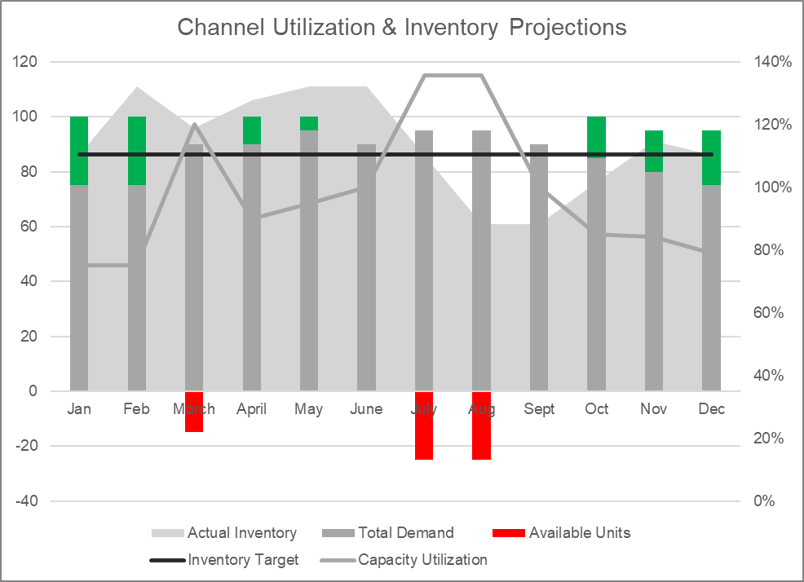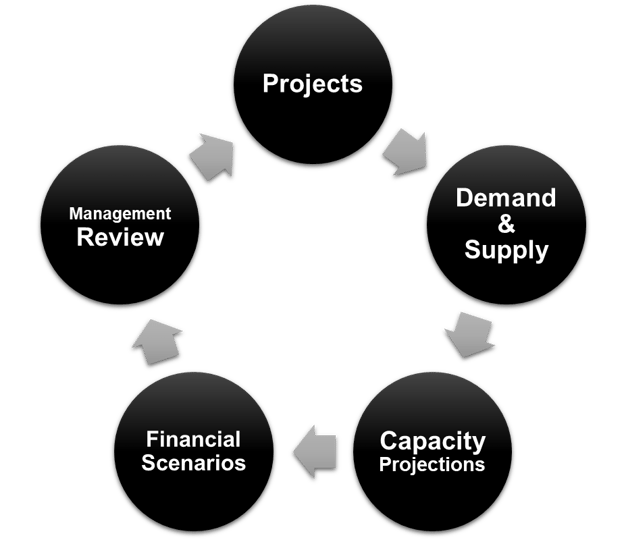Opportunities & Actions: Planning & Inventory Management
How do you optimize inventory to ensure you're meeting customer orders without incurring excess working capital costs? How are you using your sales forecast to optimize operations and procurement along with insuring an optimized inventory? Here we provide a framework you can use to explore with your team to solve these questions.
Do you experience these pain points?
- Too much / too little inventory
- Additional storage/warehousing requirements
- Unplanned production downtime
- Increased changeover costs
- Delays, short-ships to customer orders
- Unable to understand if the supply chain is performing well
Every business in the supply chain ecosystem faces its fair share of challenges. Are you constantly struggling to find the right balance of inventory, leading to increased storage needs? Are unexpected production downtimes causing disruptions to your operations? Do you fully grasp the costs and consequences associated with production changeover? Furthermore, delays and short shipments of customer orders can severely impact customer trust. If navigating the complexities of your supply chain feels like a never-ending maze, it may be time to reassess your planning approach. Recognizing these pain points is the crucial first step towards improving and optimizing your supply chain operations.
Example of stock-outs and excess inventory fluctuations

Do you feel you have the right processes and tools?
- Optimal Inventory Analysis
- Ensure MRP capabilities are effective
- Ensure system data is well-managed and accurate (will drive ineffective MRP if not)
- Implement robust SIOP process
- Establish meaningful KPI’s
- Clearly define roles and responsibilities
To thrive in the intricate realm of supply chain management, businesses require a well-crafted strategic roadmap. Begin by delving into the depths of Optimal Inventory Analysis to determine the perfect stocking levels for your organization. Ensure that your MRP capabilities are not only up to par but also highly efficient. The accuracy and management of your system data are of utmost importance as any missteps in this area can jeopardize the effectiveness of your MRP. Introducing a robust Sales, Inventory & Operations Process (SIOP) process can further synchronize and optimize your operations, leading to enhanced efficiency. It is crucial to establish meaningful KPIs that accurately measure progress. Lastly, clarity is key; always define roles and responsibilities explicitly to avoid any overlaps or gaps. By implementing these approaches, companies have experienced improved working capital and more streamlined operations.
Planning Process Overview

Exploratory questions to ask your team
- How are stocking levels decided and maintained?
- How effective is our MRP ability?
- How is data accuracy and quality managed?
- How do we make decisions about what/how much to buy?
- How frequently are there expedites and what is the cost? Is it tracked?
- What is the health of our inventory?
In the intricate domain of supply chain management, asking the right questions can unveil paths to efficiency. Start by probing how stocking levels are determined and upheld. Understand the efficacy of your MRP capabilities, a cornerstone of modern supply operations. Equally crucial is understanding how data accuracy and quality are managed and maintained. Dive into the rationale behind purchasing decisions, both in product type and quantity. Delve into the frequency and financial implications of expedites, ensuring they're consistently monitored. Lastly, gauge the health and robustness of your inventory to optimize your working capital needs. Addressing these exploratory questions is instrumental to improve cash to the bottom line.
Recommended KPIs
- Sales forecast accuracy
- Days of Supply
- Days of Inventory On Hand
- Inventory Turns
- % orders shipped On Time / In Full
- % inventory at-risk/aging/obsolete
- First Pass Quality/yield
- Changeover costs/loss
To ensure a well-functioning and efficient supply chain, leaders must keep an eye on critical KPIs. Start by evaluating the precision of your sales forecast accuracy, a vital metric for demand planning. Monitor Days of Supply and Days of Inventory On Hand to assess stock adequacy. Inventory Turns shed light on inventory efficiency, whereas % orders shipped On Time / In Full measures service effectiveness. Regularly assess the % inventory that's at-risk, aging, or obsolete to preempt potential wastage. Track First Pass Quality/yield to ensure product standards, and don't overlook the implications of Changeover costs/loss on operations. Keeping tabs on these recommended KPIs allows you to make proactive data-drive decisions and gets your team out of "fire-fighting" mode.
